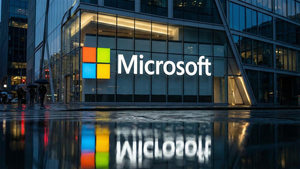
As global geopolitical tensions reach a fever pitch, gold, the perennial safe-haven asset, has surged to unprecedented highs, shattering records and captivating investor attention. With conflicts escalating across Eastern Europe and the Middle East, coupled with persistent trade frictions and domestic political uncertainties in major economies, the precious metal is proving its mettle as a vital hedge against a volatile world. This dramatic rally underscores a profound shift in investor sentiment, as market participants flock to gold’s timeless appeal as a store of value amidst the growing storm of global instability.
The current surge reflects a deep-seated apprehension within financial markets, where traditional risk assets are increasingly susceptible to sudden shocks. Gold's ability to maintain its value, and indeed appreciate significantly, during these turbulent times highlights its critical role in portfolio diversification. As of September 30, 2025, the yellow metal is not just shining; it's blazing, signaling a collective flight to safety that speaks volumes about the current state of international affairs and economic uncertainty.
Geopolitical Earthquakes Fuel Gold's Meteoric Rise
The period leading up to September 30, 2025, has been characterized by a relentless barrage of geopolitical shocks, each contributing to the escalating demand for gold. The protracted conflict in Eastern Europe continues to destabilize global energy markets and supply chains, while the ongoing wars in the Palestinian Territories and Lebanon have expanded in scope and intensity, threatening broader regional conflagration. Israeli offensives against Hamas and Hezbollah, alongside an increased involvement of Iran and its proxies, have not only fueled humanitarian crises but also introduced significant risks to vital shipping lanes like the Strait of Hormuz, exacerbating inflationary pressures.
Simultaneously, the simmering trade disputes between the United States and China persist, creating a pervasive sense of economic uncertainty and hindering global growth prospects. Tensions on the Korean Peninsula have also intensified, raising concerns about potential border skirmishes. Domestically, political instability in the United States, marked by fears of government shutdowns and renewed protectionist trade policies, has further rattled investor confidence. This confluence of events has led to a dramatic increase in state-based armed conflicts globally, with 2024 recording the highest number in over seven decades, painting a grim picture of global fragmentation.
These geopolitical tremors have had an immediate and profound impact on gold prices. The metal has not only broken through the psychological barrier of $3,800 per ounce but has seen futures trading between $3,863 and $3,895. This represents an astonishing year-to-date gain of 45-47% in 2025, with September alone marking its best month in over a decade, with gains exceeding 11%. Investors, both institutional and retail, have aggressively moved into gold-backed Exchange Traded Funds (ETFs), which have reached their highest inflow levels since July 2022. Moreover, central banks, particularly those in geopolitically sensitive regions, have embarked on aggressive gold accumulation strategies, adding over 1,500 tonnes between 2023 and 2025 as part of a broader de-dollarization trend and strategic diversification of reserves. This robust demand, coupled with a significant weakening of the US dollar (down 9-10% year-to-date), has solidified gold's position as the ultimate safe haven.
Miners Minting Gains, Others Face Headwinds
The extraordinary surge in gold prices presents a clear dichotomy of winners and losers across the financial landscape. Gold mining companies are undoubtedly the primary beneficiaries, poised to reap significant profits from the elevated commodity prices. Major players such as Newmont Corporation (NYSE: NEM) and Barrick Gold Corporation (NYSE: GOLD) are experiencing substantial increases in their revenue and profitability. Their stock valuations have soared, reflecting investor optimism about their enhanced earnings potential. These companies, along with mid-tier miners like Kinross Gold Corporation (NYSE: KGC) and Agnico Eagle Mines Limited (NYSE: AEM), are likely to see increased cash flows, potentially leading to higher dividends, share buybacks, and accelerated exploration and development projects. The improved financial health of these miners could also spur consolidation within the industry as larger players look to acquire smaller, resource-rich operations.
Conversely, companies heavily reliant on stable global trade and predictable economic conditions may face significant headwinds. Businesses with extensive international supply chains, particularly those exposed to regions affected by ongoing conflicts or trade disputes, could see increased operational costs, disruptions, and reduced demand. Industries sensitive to rising inflation, such as consumer discretionary goods manufacturers and certain retail sectors, may struggle as consumer purchasing power is eroded and input costs climb. Furthermore, financial institutions with significant exposure to emerging markets or geopolitical hotspots might experience increased credit risk and market volatility, impacting their profitability.
Beyond direct industry impacts, the broader economic implications of sustained high gold prices and the underlying geopolitical instability can create a challenging environment for many public companies. Higher inflation, driven partly by disrupted energy supplies and trade, can squeeze profit margins across various sectors. Companies that have borrowed heavily in a low-interest-rate environment may also face increased debt servicing costs if central banks are forced to raise rates to combat inflation, even amidst slowing economic growth. This scenario, often termed "stagflation," could create a difficult operating environment for a wide array of businesses, making gold's allure even stronger as a defensive asset.
Gold's Enduring Role in a Fragmented World
The current gold rally is not merely a fleeting market reaction; it represents a profound validation of gold's enduring role as a safe haven in an increasingly fragmented and uncertain world. This event fits squarely into a broader trend of de-globalization and rising nationalism, where traditional alliances are fraying, and economic interdependence is being re-evaluated through a lens of national security. Gold, as a stateless asset, transcends national borders and political ideologies, offering a universally recognized store of value independent of any single government's fiscal health or central bank's policy decisions. This makes it particularly attractive in an era where trust in fiat currencies and government stability is being tested.
Historically, gold has consistently demonstrated its safe-haven properties during times of crisis. Comparisons can be drawn to the oil shocks of the 1970s, the dot-com bubble burst, the 2008 financial crisis, and the initial phases of the COVID-19 pandemic. In each instance, as investor confidence in other asset classes waned, gold prices surged. The current situation, however, is unique in its multi-faceted nature, combining persistent armed conflicts, trade wars, and domestic political polarization across several major economies. This confluence of factors creates a 'perfect storm' for gold, reinforcing its reputation as the ultimate crisis hedge. The regulatory implications are also noteworthy; as central banks continue to diversify their reserves with gold, it signals a strategic shift away from over-reliance on a single reserve currency, potentially leading to further discussions about the future of the international monetary system and the role of various assets within it.
The ripple effects extend beyond direct competitors and partners. Companies involved in international trade, logistics, and insurance are facing heightened risks and increased costs due to geopolitical instability. Supply chain resilience has become a paramount concern, prompting businesses to re-evaluate their sourcing strategies and potentially onshore or nearshore production, which could lead to shifts in global manufacturing hubs. Furthermore, the sustained demand for gold could incentivize increased investment in mining exploration and technologies, potentially impacting environmental regulations and resource management policies in mining jurisdictions. The current environment underscores that geopolitical risk is no longer an abstract concept but a tangible factor directly influencing corporate balance sheets and strategic planning.
The Road Ahead: Navigating Persistent Uncertainty
Looking ahead, the trajectory for gold appears firmly upward in the short to medium term, driven by the persistent global uncertainties. The ongoing geopolitical tensions, coupled with inflationary pressures and the anticipated interest rate cuts by central banks in 2025, are likely to maintain robust demand for the precious metal. Short-term possibilities include continued price volatility, with potential for further record highs as new geopolitical flashpoints emerge or existing conflicts escalate. Investors should prepare for a scenario where gold tests the $4,000 per ounce mark, especially if the US dollar continues its weakening trend or if global economic growth forecasts are further downgraded.
In the long term, gold's appeal as a strategic asset is expected to endure. The structural shift in central bank buying, driven by de-dollarization efforts and a desire for reserve diversification, indicates a sustained foundational demand. Public companies, particularly those in the mining sector, will need to adapt strategically. This could involve increasing production capacities, investing in new technologies to lower extraction costs, or engaging in mergers and acquisitions to consolidate resources. For other industries, the challenge will be to build more resilient supply chains, hedge against currency fluctuations, and develop robust risk management strategies to navigate an unpredictable global landscape.
Market opportunities will emerge for companies that can provide solutions for supply chain resilience, cybersecurity, and alternative energy sources, as nations seek greater self-sufficiency and security. Conversely, challenges will persist for businesses heavily exposed to international trade and volatile commodity markets. Potential scenarios include a further escalation of conflicts, leading to a more pronounced global economic slowdown, or a gradual de-escalation, which might temper gold's rapid ascent but still leave it at historically high levels due to lingering uncertainties. Investors should monitor geopolitical developments closely, central bank policies, and inflation data, as these will be key determinants of gold's performance and the broader market's direction in the coming months.
A Golden Anchor in Turbulent Seas
The current surge in gold prices to unprecedented levels serves as a stark reminder of its enduring significance as a safe-haven asset amidst escalating global geopolitical tensions. The key takeaway is clear: in a world increasingly defined by conflict, economic uncertainty, and a structural shift in international relations, gold provides a critical anchor for investors seeking to preserve wealth. The confluence of ongoing wars, trade disputes, and domestic political instability has created a 'fear premium' that has propelled gold to record highs, demonstrating its unparalleled ability to act as a hedge against volatility and inflation.
Moving forward, the market is poised for continued vigilance. While some technical indicators suggest gold is overbought, the fundamental drivers of demand – persistent geopolitical risks, aggressive central bank buying, and a weakening US dollar – are deeply entrenched. This suggests that the current rally is not a fleeting phenomenon but rather indicative of a more profound, long-term shift in global investment patterns. The sustained bullish outlook for gold underscores a collective recognition that the era of predictable global stability may be temporarily on hold.
The lasting impact of this event will likely be a reinforced conviction in gold's role within diversified portfolios, not just for individual investors but for national treasuries as well. What investors should watch for in the coming months includes any significant developments in existing conflicts, new geopolitical flashpoints, changes in central bank monetary policies (particularly interest rate decisions), and further movements in the US dollar. These factors will continue to dictate gold's trajectory and provide crucial insights into the broader health and direction of the global financial markets. Gold's current brilliance is a powerful signal that the world is indeed navigating turbulent seas, and its shine serves as both a warning and a potential safeguard.
This content is intended for informational purposes only and is not financial advice.


















